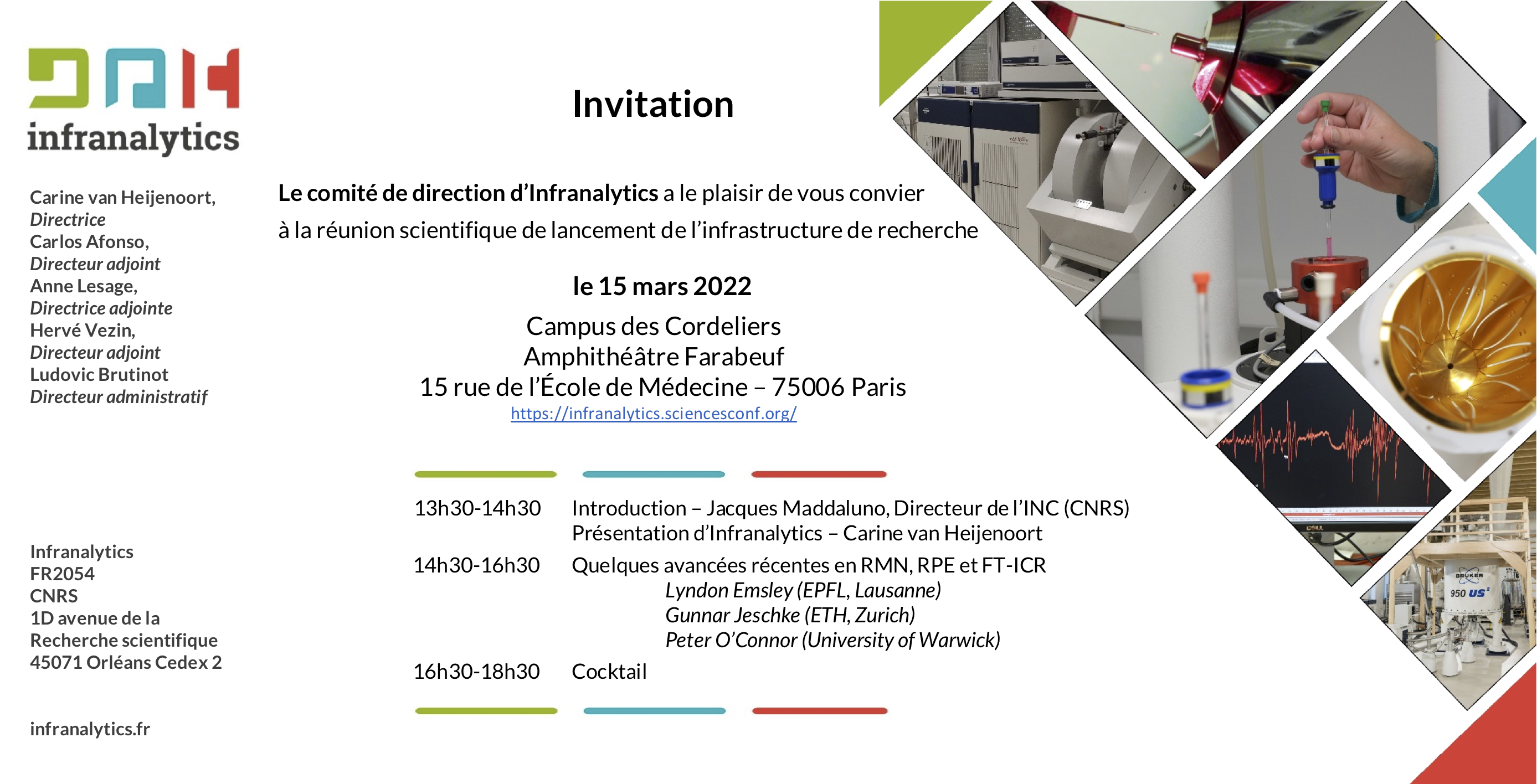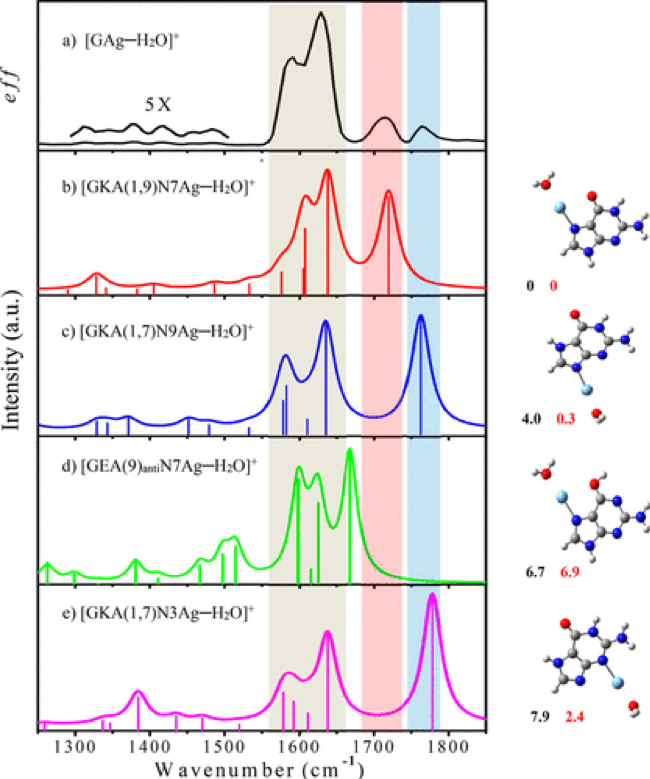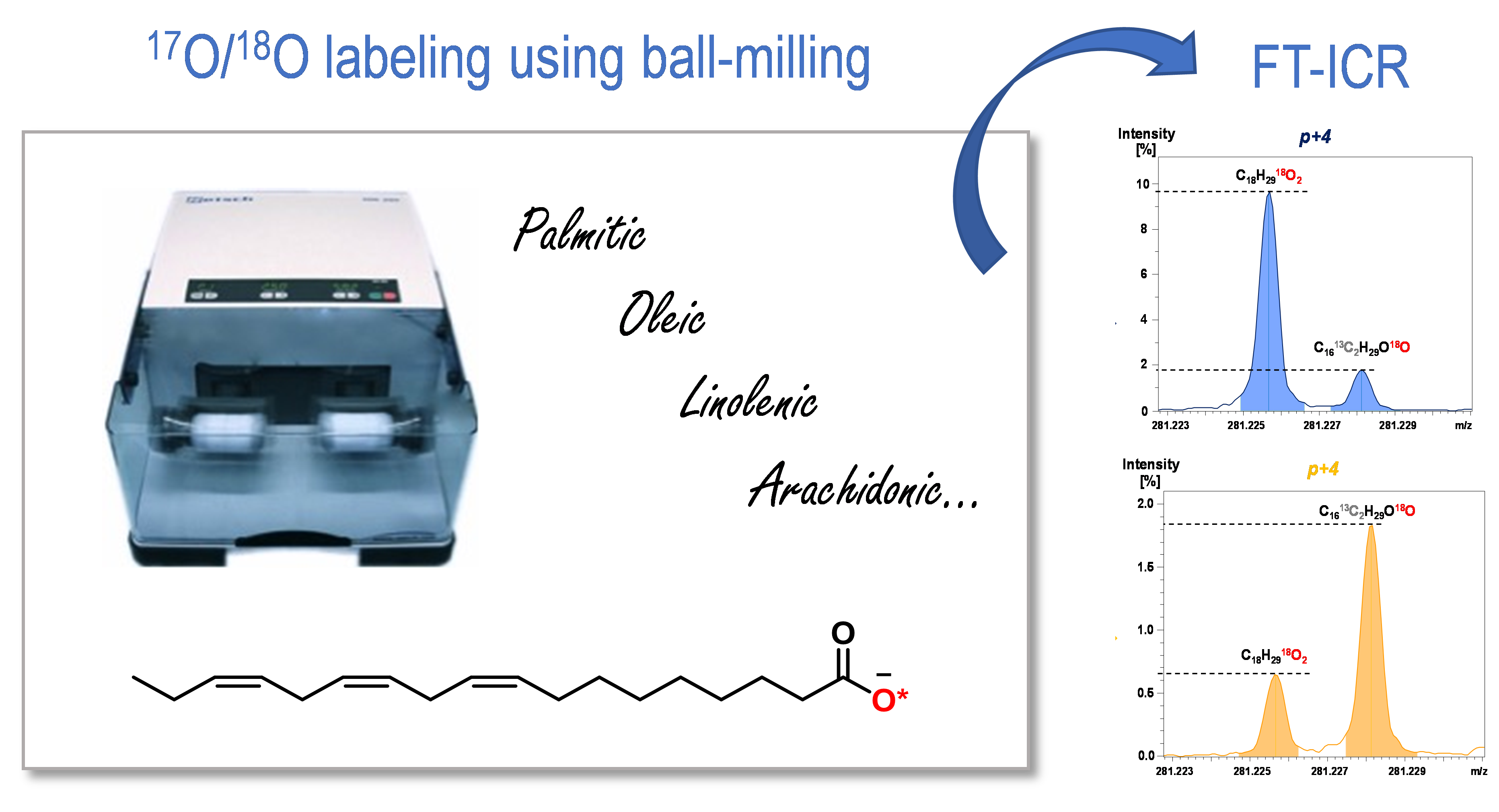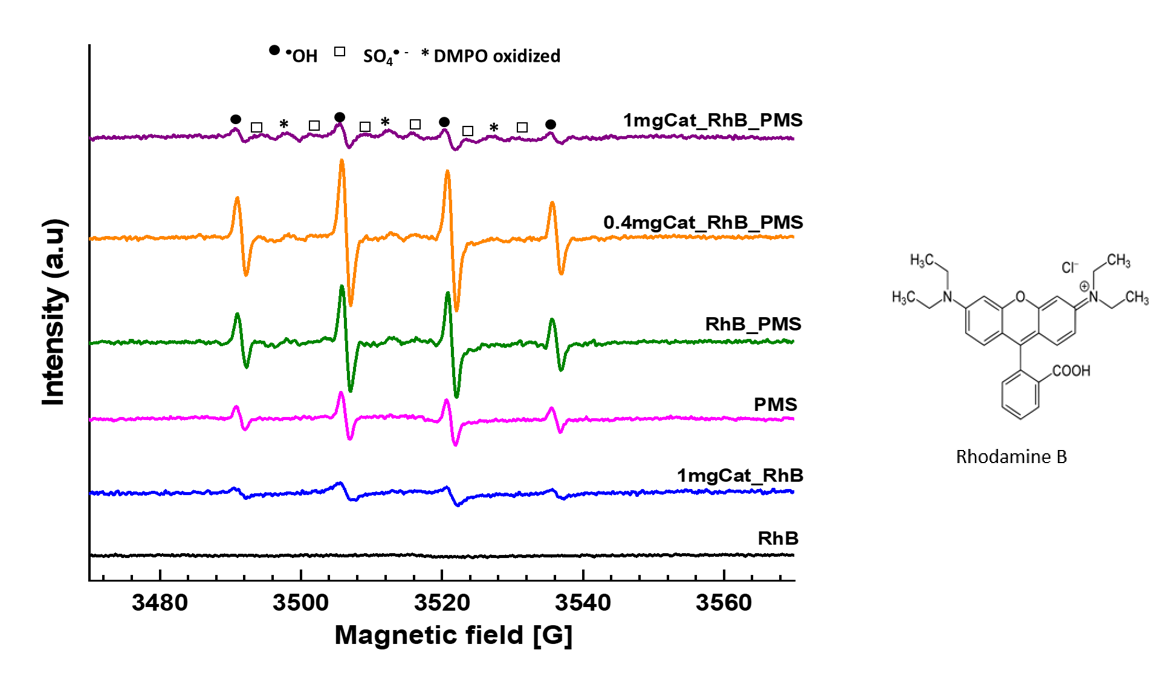Scientific news
The methodological developments carried out by Andrew Pell's team at the Infranalytics NMR center in Lyon make it possible to push paramagnetic NMR further, particularly for the study of sodium-ion battery components.
Antoine Loquet, scientific manager of the Bordeaux site, received the Ampère Prize (May 2021) for his research on the study of protein assemblies by nuclear magnetic resonance in the solid state.
Bolaamphiphiles appear as promising materials for biomedical applications.
The Infranalytics launch meeting brought together around 120 people, at the Cordeliers center at Sorbonne University and remotely.
The characterization of the structure of guanine tautomers in the gas phase carried out by FT-ICR on the Orsay mass spectrometry platform in collaboration with the University of Cordoba in Argentina provides a better understanding of the recognition mechanisms between the different bases. DNA and RNA.
Sirine Nouri wins the "Journal of Magnetic Resonance young scientist" award at EUROMAR 2021!
How can we improve our ability to analyze fatty acid-based biomolecules and nanomaterials? Is it possible to directly probe the vicinity of oxygen atoms? CNRS researchers from Montpellier have just shown that thanks to a new route of isotopic enrichment in 17O/18O, very high resolution analyzes by solid-state NMR and FT-ICR are now possible!
The Strasbourg EPR site uses several pulsed EPR sequences to study spin dynamics in the family of [Y(pc)2]• complexes. Non-deuterated compounds, the condensed magnetic phase and room temperature are the favorable conditions to highlight Rabi-type oscillations in these radical systems.
The RPE Lille site has identified the radical species responsible for the catalytic decomposition of organic molecules present in wastewater. With a cobalt catalyst and in the presence of an oxidizing molecule, the organic molecules are decomposed in less than 10 minutes.
By characterizing the interaction between fragments of BRCA2 and HSF2BP by NMR, SAXS and in vitro crystallography, as well as by immunoprecipitation in cells, teams from I2BC and ERASMUS MC identify the precise motif of BRCA2 at the origin of the very strong affinity between the two partners and shows that, in vivo, this complex has no function in the recruitment of Rad51 to the meiotic sites of homologous recombination.











